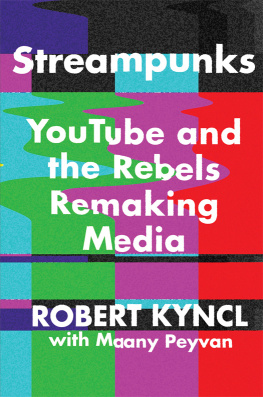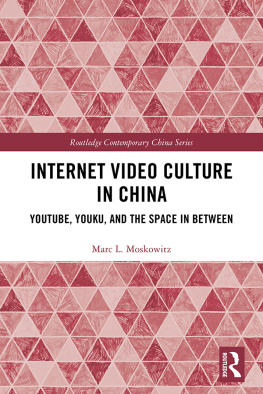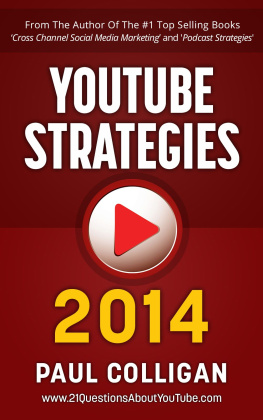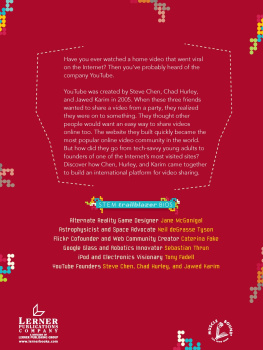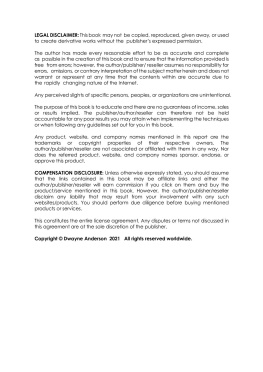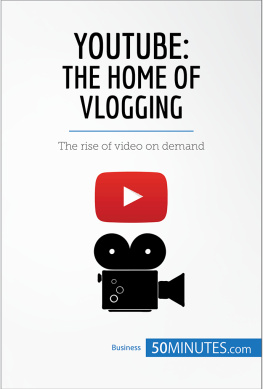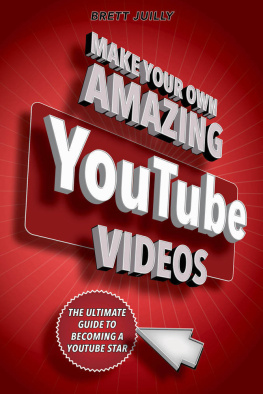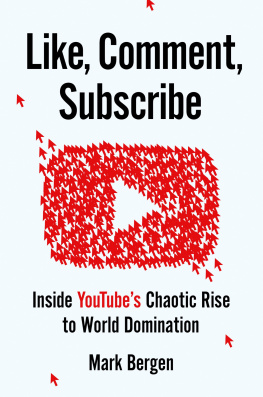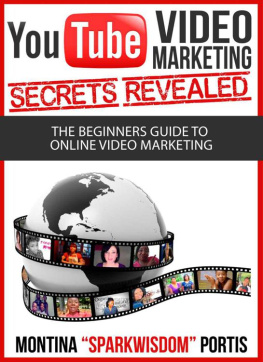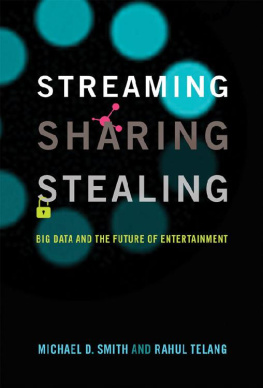Theres nothing on TV.
No, really, where I grew up there actually wasnt. I was born behind the Iron Curtain, in Communist Czechoslovakia, in 1970. By the time I was a teenager, my choices for entertainment wereto put it mildlybleak. Books were censored by the Office of Press and Information; we had only one newspaper, Rud Prvo, the official paper of the Communist Party; and the state controlled the radio, the airwaves, the cinemas, and the symphonies. It was illegal for a private company to print a publication or broadcast a signal. It was illegal to reproduce more than eleven printed copies of anything. And it was illegal for a band to perform without a license.
Faced with those options, I had only one choice: to get creative.
I obtained books through samizdat, the underground distribution network that began under Nazi occupation (1984 was an early favorite of mine). I bent the antenna of my transistor radio just so, in order to hear bands such as Bon Jovi, Scorpions, and Tears for Fears come in scrambled over the airwaves from West Germany. And if I was lucky, I would get my hands on a bootlegged VHS tape that friends of mine somehow managed to smuggle into the country.
I can still remember the first Western film I ever watched: The Terminator. But because there was no money for proper subtitling or dubbing into Czech, one person did the voice-over for every character in the film. It was, by any standard, a terrible viewing experience. But it didnt matter. My friends and I watched it three times in a row.
Today I look at my two teenage daughters and the ways they have to entertain themselves. I look at the limitless number of books they can read on their tablets (though they prefer hard copies from Amazon). I look at the thousands of outlets they can browse through on their phones to get news. I look at the millions of songs they can listen to on Spotify, the thousands of films and shows they can watch on Netflix, and the hundreds of channels they can lean back and watch on our satellite TV package. I look at all of that, and think about how their options for entertainment vastly outnumber those I had growing up. Hell, they vastly outnumber the options that kids growing up in America had just ten years ago. But even with an ocean of media before them, I see how they choose to spend a significant amount of their free time: watching YouTube.
In less than one generation, weve reached a point where what we watch, read, and listen to is no longer determined solely by states or corporate monopolies but by us. With the creation of YouTube, for the first time people were given access to free, instant, global distribution of video. While streaming services such as Netflix, Hulu, and Spotify have done an incredible job distributing traditional content in new ways, open platforms such as YouTube have changed who is able to produce, distribute, and consume media. All of a sudden anyone in the world could share a video with everyone in the world.
Over just one decade, that freedom has had far-ranging implications throughout the media industry. It has redefined what it means to be a celebrity and who can become one. It has thrust new people into the spotlight who understand that fame has changed. It has elevated the importance of engaging fans directly, rather than keeping them at a remove. And it has led to the emergence of a much more diverse and opinionated cast of stars who stand out from the inoffensive, inauthentic stars of previous generations.
That freedom has also altered our idea of what entertainment can be. It has unleashed entirely novel yet staggeringly popular genres of content, from beauty vlogging to video game commentary to unboxing videos. It has shrunk our world, exposing us to media from other countries that had long been hidden behind borders. And it has given billions of people the opportunity to watch videos based on their individual interests, rather than having to satisfy themselves with entertainment manufactured for the masses.
And that freedom has changed the rules of the industries that have been built to entertain and inform us. It has changed the way we watch the news, empowering citizen journalists from Ferguson to Syria to document injustice for the world to witness. It has helped elevate advertising into an art form, turning commercials into must-see clips. And it has resuscitated the music video, giving aspiring musicians a new way to break into the mainstream.
When I look at my life today, it couldnt feel further away from my youth behind the Iron Curtain. I grew up dreaming of the West but got only an occasional uncensored glimpse of it. Now, as the chief business officer of YouTube, my job is to help bring information and entertainment to over a billion people around the world, including many in countries whose governments try to limit that access. And rather than offer a glimpse of the world, YouTube holds up a mirror to the entire human experience, reflecting all of our joys, all of our struggles, all of our news, and all of our history.
Today, 1.5 billion people turn to YouTube every single month to watch the largest library of video ever assembled whenever they want, wherever they want, on any device they want. Some come to watch the latest viral hit, music video, or late-night clip. Some come to catch up on news or sports. Some come to learn something new or indulge an interest. Some even come just to watch ads. But most people visit YouTube to watch something they cant find anywhere else: a generation of auteurs and entertainers who have built their success on the platform, inspired by the challenge to share their creativity with the world.
I call these trailblazers streampunks.
I didnt write this book to provide an origin story about YouTube. I didnt write it to paint another corporate portrait of a Silicon Valley upstart thats trying to disrupt an industry or rewrite the rules. I wrote it because I wanted to tell the story of an incredibly talented collection of creators and entrepreneurs whove used YouTube to do amazing things. Some of them draw audiences larger than those of hit TV shows. Some of them have built thriving businesses. But all of them together are fundamentally transforming how media works.
Through their stories, I hope to describe that transformation. I hope to highlight the tactics theyve used to prosper. I hope to provide an honest depiction of the difficult challenges they have faced along the way. And I hope to articulate what their success means for the future of media.
Above all, I hope Im able to create something that connects with audiences, entertains them, and makes them feel part of a growing movement.
After all, streampunks do that every day.
THEY COME IN cameras first.
The doors of a soundstage in New Yorks Chelsea neighborhood swing open, and more than a hundred of the most successful entertainers of the digital age flood into the room, their phones held high to capture the moment while the Calvin Harris track How Deep Is Your Love booms over the sound system. Their ages, which span decades, seem to dictate how quickly they enter the room. The youngest, those in their late teens, rush in to get the best seats toward the front of a wide stage. The older Millennials come in behind them, prizing the opportunity to interact with each other over the chance to sit up front. The last to come through are the Gen Xers, the elders of YouTube, and you can spot them almost instantly; theyre the only ones with backpacks. But whether young or (relatively) old, almost all of these streampunks record their entrance to later share the moment with millions of their fans from around the world.

